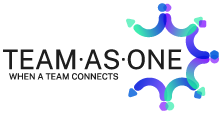Gallup has been measuring employee engagement at work for decades and its Q12® survey [1] is the globally recognized standard. Over all these years, the results of the survey have been rather stable with an average of 31% of employees fully engaged, the rest being either not engaged or actively disengaged.
The results for the Q12® survey after the COVID pandemic have only darkened the picture, with engagement levels dropping in nearly all countries [2]. The impact of employee engagement on the business performance has been demonstrated in many studies [3]. It is therefore not a surprise that organizations keep putting employee engagement on top of their priority list, despite the limited success in improving it significantly.
The 12 questions that make up the Q12® survey are:
- I know what is expected of me at work.
- I have the materials and equipment I need to do my work right.
- At work, I have the opportunity to do what I do best every day.
- In the last seven days, I have received recognition or praise for doing good work.
- My supervisor, or someone at work, seems to care about me as a person.
- There is someone at work who encourages my development.
- At work, my opinions seem to count.
- The mission or purpose of my company makes me feel my job is important.
- My associates or fellow employees are committed to doing quality work.
- I have a best friend at work.
- In the last six months, someone at work has talked to me about my progress.
- This last year, I have had opportunities at work to learn and grow.
When an individual completes a survey about their work experience, they will think about the concrete aspects of their actual job rather than contemplate high-level metaphysical aspects linked to their organization. That job links them to others: for most employees, the people with whom they interact and with whom they have connections – either good or bad ones – form the essence of their “world” at work.
 The team is the reality of your experience at work.
The team is the reality of your experience at work.
You have responsibilities that seem to be connected to other people’s responsibilities; you have strengths that seem to be complemented by those of others; you have people over your left shoulder and your right, looking out for you, keeping your confidences, offering their reactions to your work, sharing your idea of what “good” is, chipping in when you seem overwhelmed, and giving their input when you get stuck.
The quality of this team experience is the quality of your work experience.” [4]
When exploring how to impact employee engagement – often in the wake of the most recent survey – organizations tend to jump into high-level initiatives such as promoting work/life balance or upgrading the overall EX framework (employee experience). Although these company-level approaches may be highly visible and benefit from heavy communication, they are often disconnected from an employee’s direct job activity.
Maybe the solution is to be found in the questions? In Q12®,Gallup creates question sub-groups around the themes of “basic needs”, “growth”, “individual needs” and “teamwork”. Questions Q07 until Q10 fall under the theme “Team Work: Do I Belong Here?”. But in reality, it is not just these questions that link to the team we work with.
 “Know what is expected of me at work” (Q01) is most likely connected to the team leader and team colleagues, rather than the headquarters expectations. Applying strengths (Q03) becomes meaningful if it is in connection with others. Recognition (Q05) and care (Q06) would come from those with whom one interacts regularly. The ADP Research Institute finds that merely being on a team rather than working as an individual contributor in and of itself doubles the likelihood of being fully engaged at work (excluding other parameters).
“Know what is expected of me at work” (Q01) is most likely connected to the team leader and team colleagues, rather than the headquarters expectations. Applying strengths (Q03) becomes meaningful if it is in connection with others. Recognition (Q05) and care (Q06) would come from those with whom one interacts regularly. The ADP Research Institute finds that merely being on a team rather than working as an individual contributor in and of itself doubles the likelihood of being fully engaged at work (excluding other parameters).
Since “the team is the reality of your experience at work” [4], engagement at work exists – or is absent – mostly from what happens at the level of the team. Improving engagement needs to be anchored into the direct experience employees have with the team(s) they are part of. Developing team leaders and team members becomes the fertilizer that will help engagement take root and grow.
Making teams and genuine collaboration a core foundation of how important work gets done will go a long way towards building and sustaining engagement. Something to consider when you receive the next engagement survey results.
Peter Cauwelier, PhD
TEAM.AS.ONE
2023
- Gallup. Gallup Q12 Survey. 2020; Available from: https://q12.gallup.com.
- Gallup. State of the Global Workplace 2022 report. 2023.
- Kumar, V. and A. Pansari, Measuring the benefits of employee engagement, in MIT Sloan management review. 2015: Cambridge. p. 67-72.
- Buckingham, M. and A. Goodall, The Power of Hidden Teams, in Harvard Business Review. 2019, Harvard Business School.

